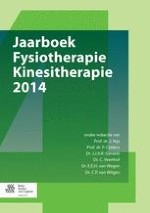Inleiding
Van de hele bevolking maakt 60 tot 90 procent ooit een episode van lagerugklachten door (KNGF, 2005). Het is dan ook niet verwonderlijk dat lagerugklachten de meest voorkomende klachten zijn waarmee patiënten zich aanmelden in de kinesitherapeutische/fysiotherapeutische praktijk (Landelijk Informatiesysteem Paramedische Zorg (LiPZ), 2012). Aspecifieke lagerugklachten is een veel voorkomende verwijsdiagnose (31,8% van de verwijzingen naar de kinesitherapeut/fysiotherapeut) (KNGF, 2005). Men spreekt van aspecifieke lagerugklachten als er geen aantoonbare structurele oorzaak is voor de klachten. Ongeveer 35 procent van de patiënten die zich met lagerugklachten bij de huisarts melden, heeft na twaalf weken nog steeds klachten en tot drie kwart van de lagerugklachten kan binnen een jaar recidiveren (KNGF, 2005).
